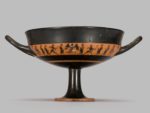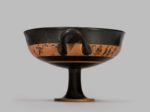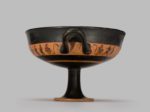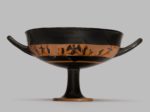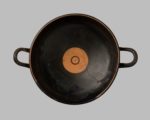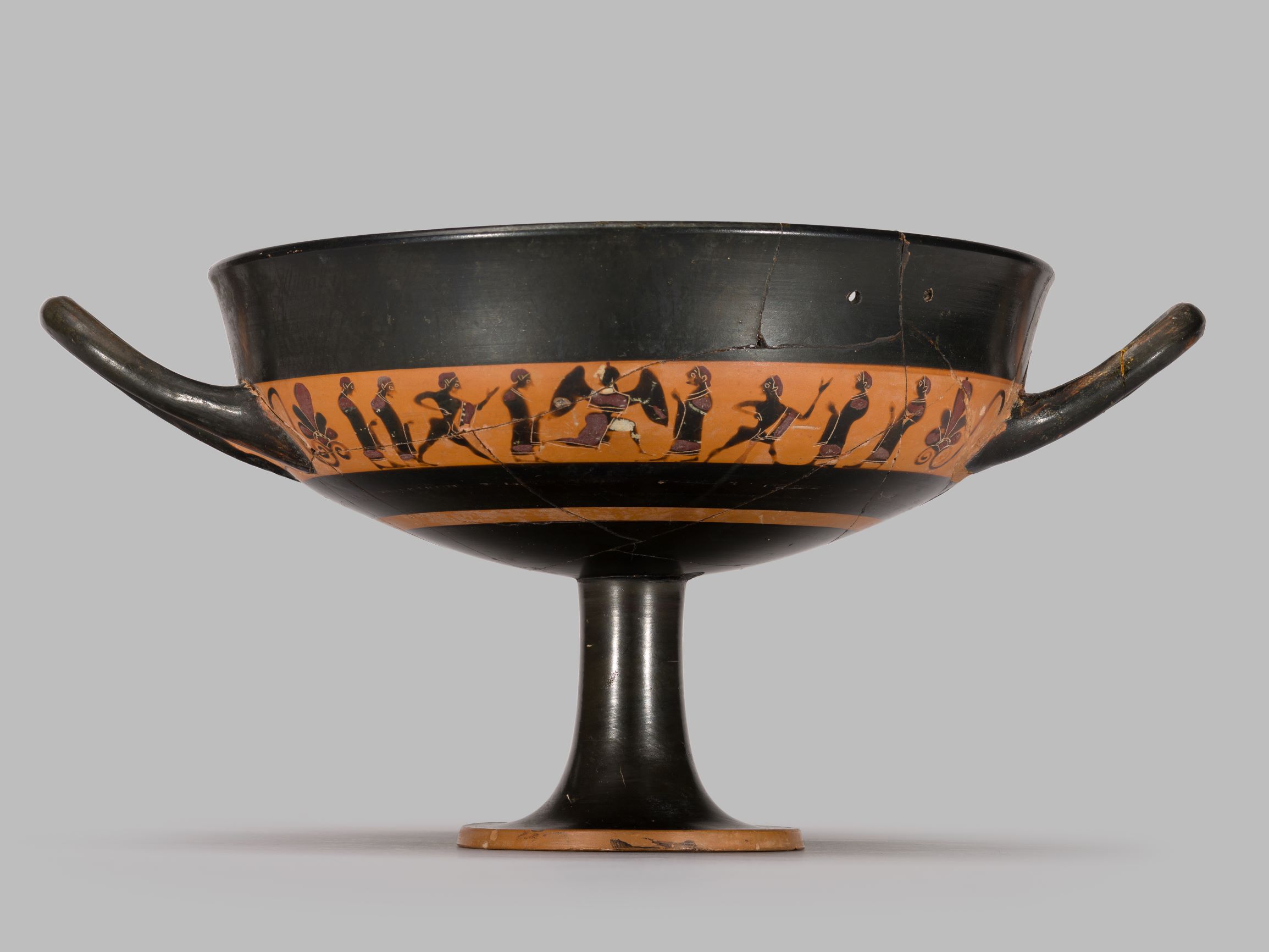
Band Cup [Gr6]
Athenian Black-Figure, c. 530 BC
Painted terracotta (h. 14 cm, w. 27.9 cm), mended and restored
The interior mostly painted black, with a reserved band on inside of rim, and reserved circle in the centre of the floor of the cup. The exterior painted black with a frieze running around the body.
This type of drinking cup is known as a ‘band cup’ because of the narrow band of decoration around the bowl. Band cups were one of several closely related forms of drinking cup made in late 6th century Athens that are collectively referred to as ‘Little-master cups’. This name comes from the small-scale figurative images that form the typical decoration of these cups. Gr3 is a fragment from a slightly different kind of Little-master cup known as a ‘lip cup’.
The frieze on this cup is damaged in some places, but the miniscule figures are otherwise preserved in fine detail. It is divided into two sections, each ‘bookended’ by palmettes on either side of the handles. At the centre of both sides, a winged Nike (goddess of victory) is flying to the right with her head turned back. She wears a belted garment with her forward leg exposed. The figure of Nike separates two groups each of four figures, some of whom are nude (apart from a short cloak folded over their outstretched left arm), and some of whom wear a long belted himation (outer garment). On one side of the cup are two nude men and six clothed, and on the other are four nude men (one almost entirely obscured by damage) and four clothed. Otherwise the two scenes are very similar.
Details of the figures’ clothing and hair, and the leaves of the palmettes, are picked out in added red pigment. Fine incisions add detail to the silhouettes of the figures. As is typical of female figures on black-figure vases, Nike’s skin is painted with a white pigment (also used to decorate the himatia) to contrast with the black of the male figures.
Two small holes just below the rim of this cup suggest that it was broken and mended in ancient times. A metal staple would have been fixed through the holes to hold the vessel together and prolong its life.
Literature: J. Falconer and T. Mannack, Corpus Vasorum Antiquorum: Great Britain, Fascicule 19: Winchester College (Oxford, 2002), pp. 1-2, plate 1.8-9; Winchester College Memorial Buildings: Department of Classical Art (Winchester, 1909), pp. 16-17 (no. 39)
Provenance: From Athens, at Winchester College by 1909
Location: Treasury, Gallery 3
